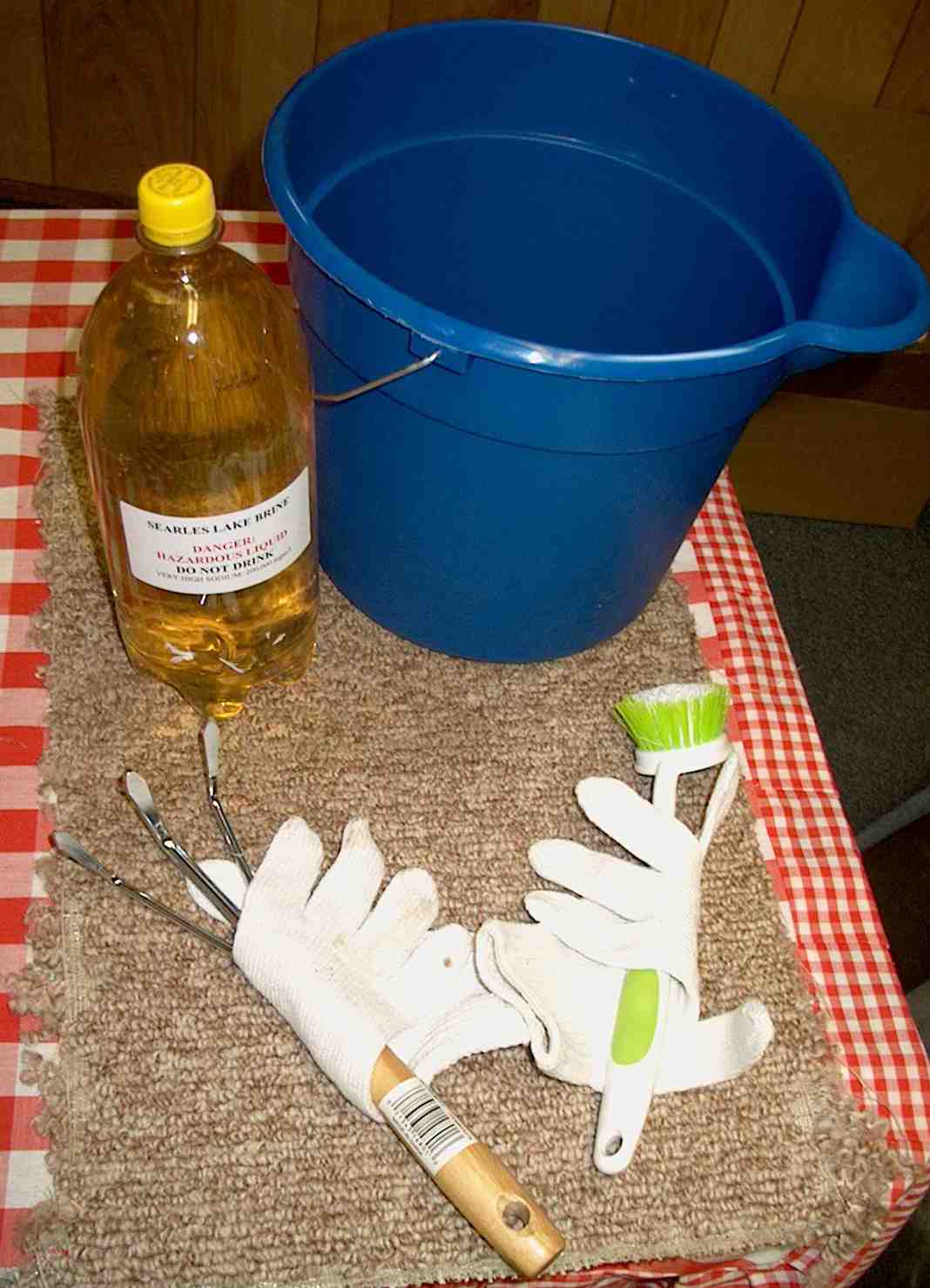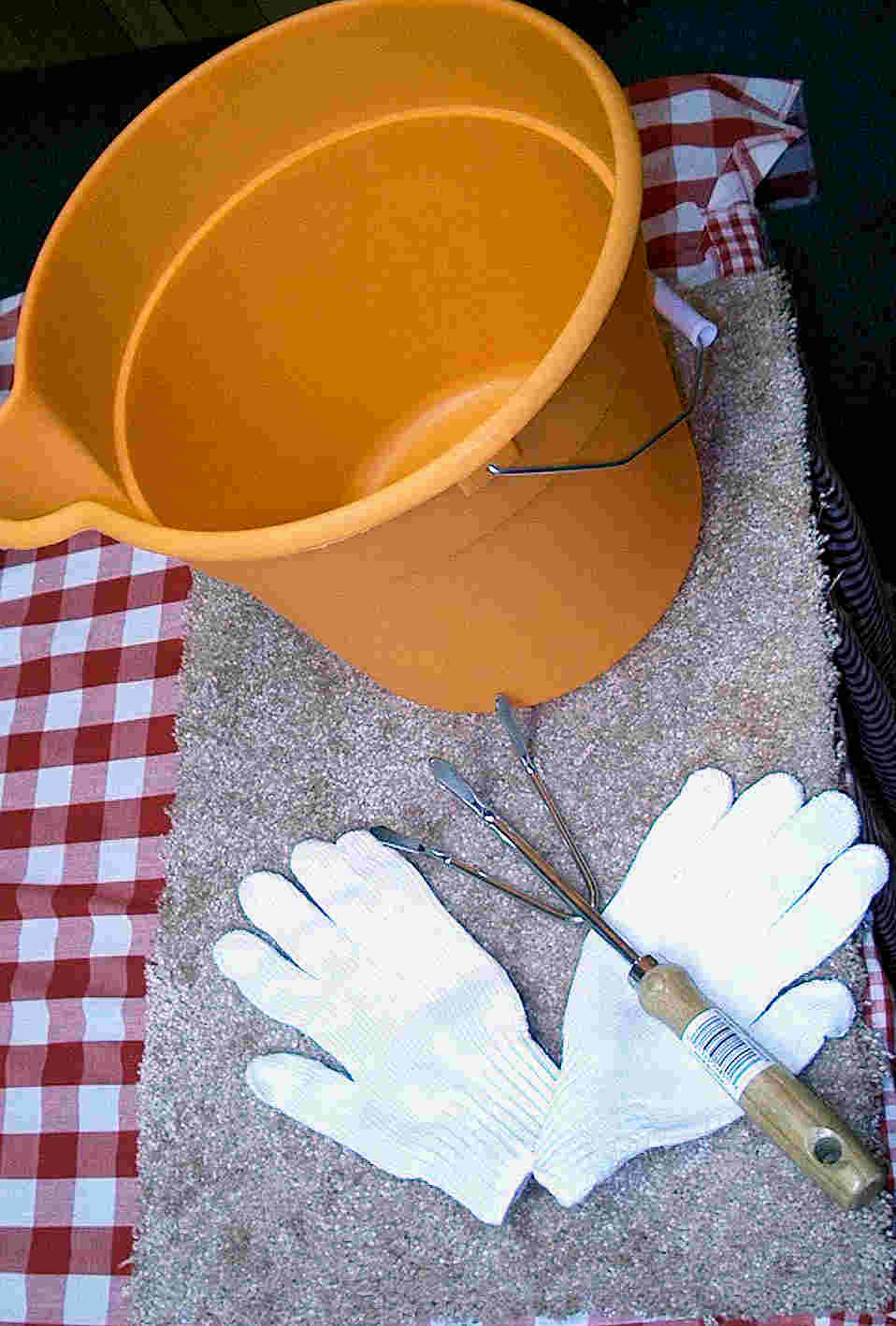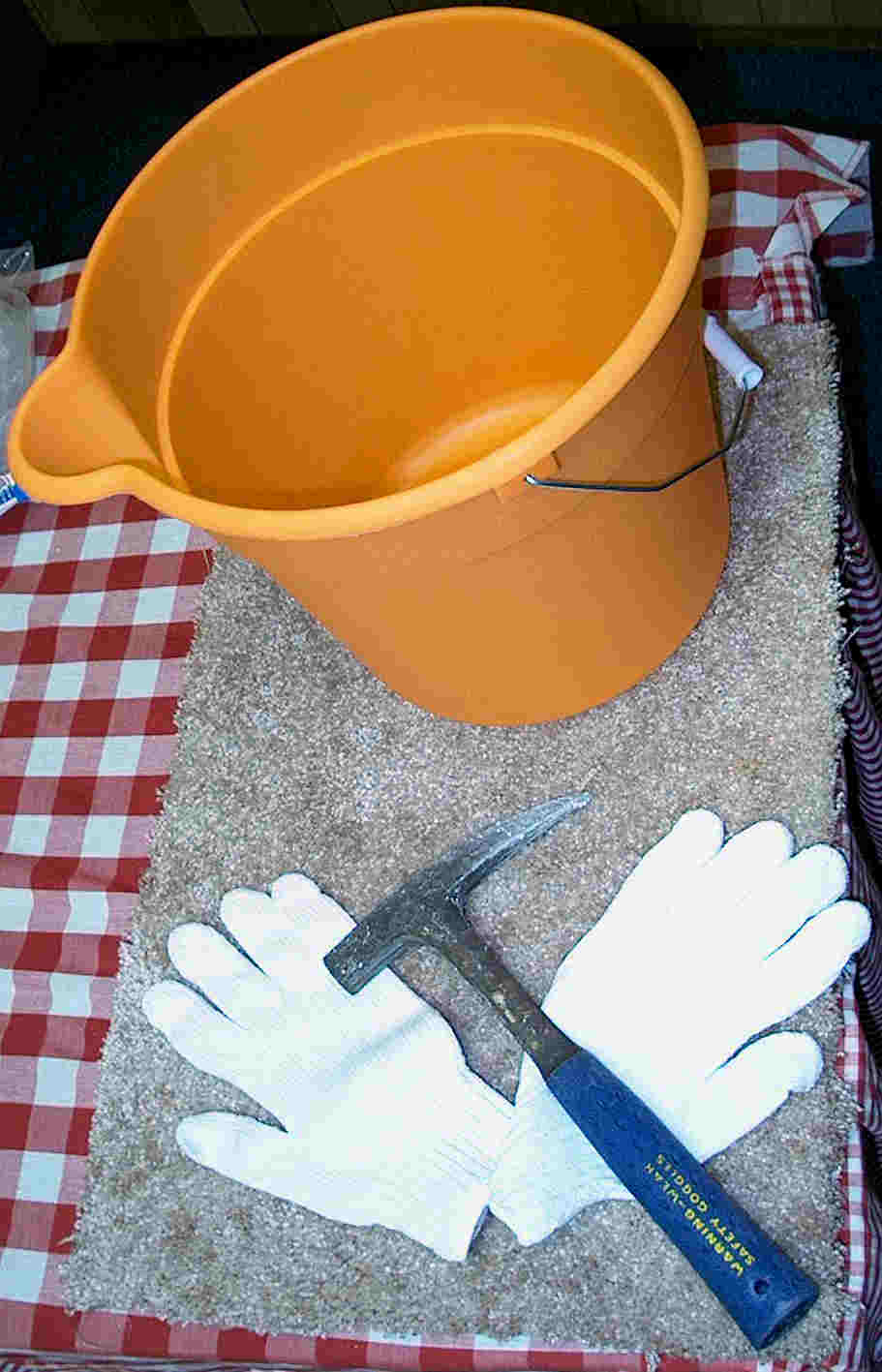Searles Lake Gem &
Mineral Society
TOOLS
NEEDED ON FIELD TRIPS
Tools for Mud Field Trip
1. 3-tined cultivator to dig through mud
2. Small brush to wash mud crystals
3. Brine to wash crystals
4. Bucket to hold what you find
5. Carpet square to kneel or sit on (optional)
6. Gloves to protect hands (optional)
All these items can be purchased in the SLG&MS General Store at
reasonable prices
|
 |
Tools for Blow Hole Field Trip
1. 3-tined cultivator to dig through piles of
crystals
2. Bucket to hold what you find
3. Carpet square to kneel or sit on (optional)
4. Gloves to protect hands (optional)
All these items can be
purchased in the SLG&MS General Store at
reasonable prices |

|
Tools for Brine Pool Field Trip
1. Geologist's pick to chop off small
specimens
2. Heavy steel bar with blade for large specimens
3. Bucket to hold what you find (boxes work well too)
4. Gloves to protect hands
5. Carpet square to kneel
or sit on (optional)
Items 3, 4 and 5 can be
purchased in the SLG&MS General Store at
reasonable prices, and salt bars
can be rented for weekend
|


|
Don't Stop Here,
Read On!!!!
MINERAL COLLECTING ON
SEARLES DRY LAKE, CALIFORNIA
by
Jim Fairchild - Searles Lake Gem & Mineral Society
The operating company on Searles Dry Lake, Searles Valley Minerals,
Inc. (SVMC), permits public mineral collecting at just one time each
year:
during the annual gem and mineral show of the Searles Lake Gem &
Mineral
Society. The show always begins on the second Saturday in October. This
show date was chosen because it is the very best time of year to
collect
Searles Dry Lake minerals; the brine level is below the salt surface
(necessary
to collect Upper Salt minerals), the mud is dry and hard and can
support
the heavy equipment used to bring it to where it can be prospected for
minerals, and the pink halite has formed well and not yet begun its
annual
winter dissolving. The weather is also cool enough to make collecting
comfortable
(Searles Valley can reach 120oF during a summer afternoon).
During the show there are three field trips to Searles Dry Lake, and
on each trip different specimens are available. The first field trip at
9 A.M. on Saturday is to collect minerals found in the near-surface
muds.
For this trip SVMC uses a large backhoe to dig up to 600 tons of mud
and
load it into trucks. The trucks then carry it about two miles where
they
spread it in a area where visitors can prospect it for specimens. This
trip features very large Hanksite crystals (some up to 3 or 4 inches
across),
large clusters of large Hanksites growing together with other minerals
(some clusters up to 100+ pounds), occasional large Borax crystals, and
bladed Trona crystals. These are buried in very fine, sticky, black MUD!
You will get very DIRTY! At the collecting area there will be
brine
to wash your crystals in and brackish water for washing yourself. You
may
want a geologist's pick, three-tined garden cultivator, or a hand
trowel
to work through the mud to find good specimens. How long has it been
since
you played in the mud!
The second trip at 2:30 P.M. on Saturday is to the salt surface
where
Upper Salt minerals from 30 to 45 feet beneath the surface have been
lifted
to the surface and spread for your selection. The rarer minerals
available
are Hanksite, Sulfohalite, Borax, and Trona. Each of these is found in
just a few places in the world (Hanksite is found only one other place,
Lake Katwe in Uganda, Africa). This trip also features a demonstration
where several tons of these minerals are "jetted" from below and spread
across the surface. This trip is the most popular with up to 1000
collectors
each year. Since collecting is on a dry salt surface and the material
is
spread thin, collecting is clean and easy and no special tools are
needed.
However, you may get your shoes wet with brine if you choose to either
stand too close during the "jetting" demonstration or rush in just
after
the demonstration ends.
The third field trip at 9 A.M. on Sunday is to collect the beautiful
Searles Dry Lake pink halite. This will be the only mineral available
on
this trip. The best specimens are usually found on the underside of
overhanging
ledges beneath the surface of open brine pools. The best ledges are
usually
in the deepest pools. To collect your specimens you will have to be
able
to chop off the ledge. Since most ledge material is tough and hard,
heavy
digging tools such as picks or a heavy steel bar with a sledge hammer
may
be necessary. Since the brine pool may be up to 2-3 feet deep, you may
want a partner to catch the specimen once it has been chopped off so
that
it does not get lost. Some good specimens are also found where a
pressure
ridge has created a void at or just below the brine surface. Again, the
salt in these ridges is tough so heavy tools are helpful.
All Searles Dry Lake minerals you can collect dissolve easily and
quickly
in water. Therefore, DO NOT WASH SEARLES LAKE MINERALS IN WATER,
they will disappear! Use brine. Although brine can be obtained during
the
second and third field trips described above, this brine is not
saturated
in sodium sulfate. Since Hanksite is about 85% sodium sulfate,
washing
your Hanksite specimens in this brine can still result in leaching of
the
crystal surfaces. Brine from deep wells that is saturated in
sodium
sulfate is available for purchase at the General Store in the Show
Building.
But even when using deep well brine, do not soak your specimens in the
brine, and keep the brine near room temperature. The sodium sulfate in
the brine changes solubility very quickly with temperature and the
stable
crystal form of the sulfate minerals changes at about 60oF
to
form a highly hydrated salt. If this occurs it will probably destroy
your
specimens.
Searles Lake Gem and Mineral Society
P. O. Box 966
Trona, CA 93592-0966
Phone (760) 372-5356

| Home
| Site Map
| Gem-O-Rama
Site Map | Revised 09/29/2010
All contents of this web page are the property of
the
Searles Lake Gem & Mineral Society.
Reproduction or other uses of any of these contents
without the written permission of the owner is prohibited.
If you want to use any of the contents, contact the
SLG&MS at any of the above.